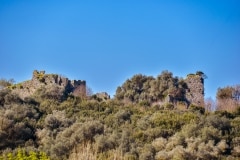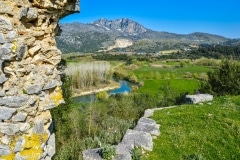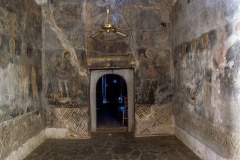
Castle of Rogoi
The ancient Castle of Rogoi is located on a hill between Nea Kerasounta and Petra, near Filippiada at the Regional Unit of Preveza. It has been built on the ruins of the ancient city of Bouchetion which was an Eleian colony. The first fortification walls of the acropolis were built in the 5th BC century and the boulders are evident in the present structure of the castle. According to mythology, the founder of the settlement is Bouchetus, son of Echetus, who was a mythical king from Epirus.
The settlement was named Rogoi or Arogoi because it provided shelter and help (arogi) during the Middle Ages to people from coastal areas during enemy attacks, mainly by Slavs and Bulgarians.
The Louros River flows on the south side of the Castle, forming a beautiful natural landscape. The castle was of strategic importance mainly due to the fact that in times past, the Louros River was navigable and served as a waterway to transport products and materials from the rich mainland of Epirus. The hill on which the castle was located was ideal for the control of navigation on the river.
In the 13th and early 14th centuries, at a time of prosperity, the Castle of Rogoi was the historical, administrative and military center of the Despotate of Epirus. The last reconstruction took place during this period and the castle took its present form.
Inside, on the northwest side, a stone-built single-aisled basilica tells the story of an old monastery of the late 17th century. It is the Church of the Dormition of Virgin Mary, which was renovated and painted at the end of the 17th century and is listed as a historic monument.
Video
Virtual Tour




